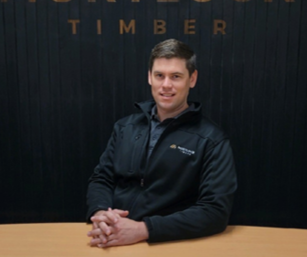Cladding High Rise Buildings with Timber? | Welcome to the Future
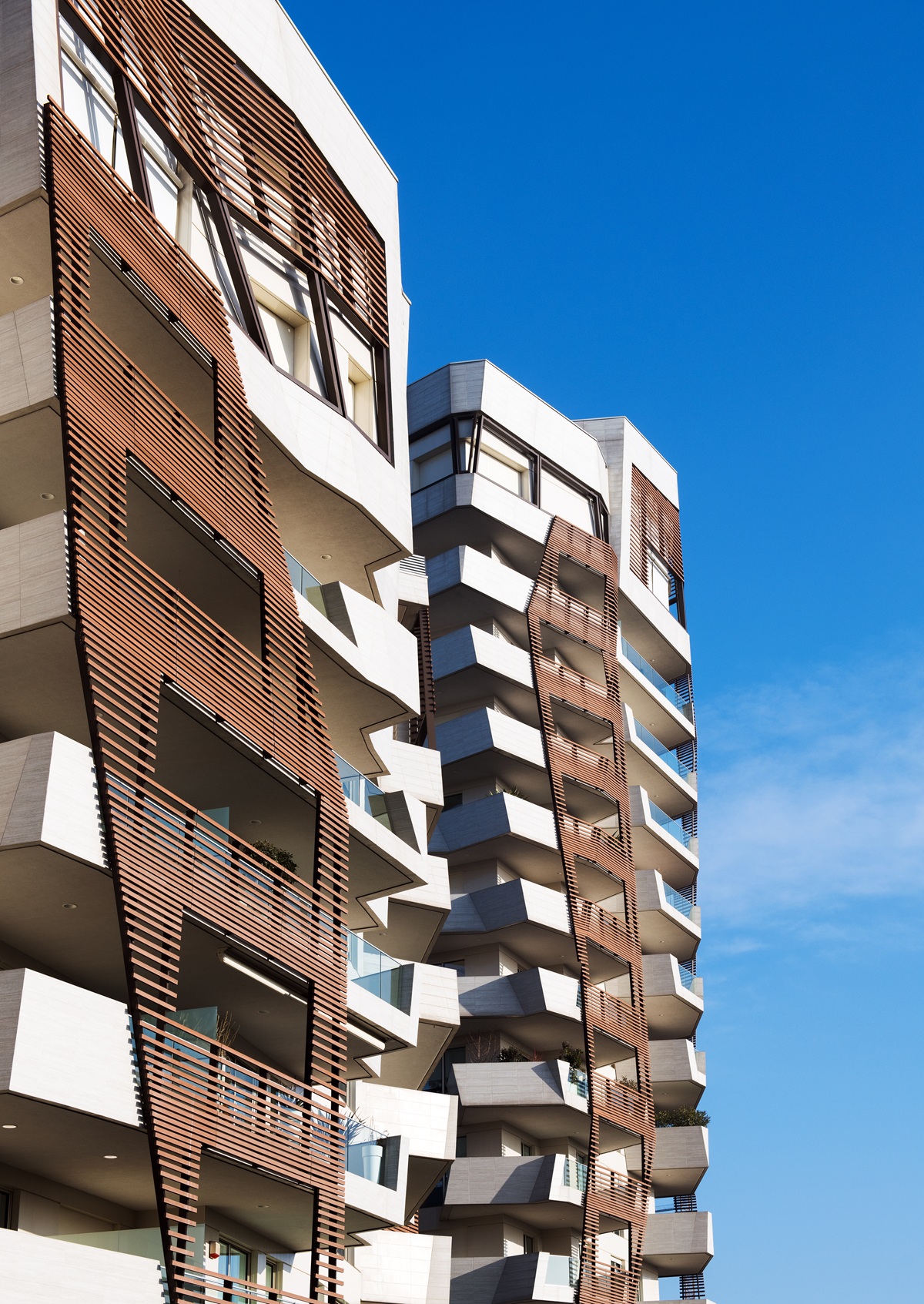
Get to know:
- What is cladding high rise buildings with timber?
- Why timber?
- Regulations for timber-clad high rise buildings in Australia
- What makes mass timber special?The role of premium architectural timber suppliers
- The future of cladding high rise buildings with timber
Imagine a cityscape where towering high-rise buildings are clad not in cold steel or glass, but in warm, natural timber. Sounds futuristic, right? Well, the future is here. Cladding high rise buildings with timber is revolutionising modern architecture. By using mass timber, architects are creating sustainable, fire-safe, and visually stunning structures that redefine urban skylines. But how does it work? What are the rules? And why is timber suddenly the material of choice for modern skyscrapers? Let’s dive in.
What is cladding high rise buildings with timber?
Cladding high rise buildings with timber involves using wood-based materials to create the exterior layer of a building. But this isn’t just any timber—it’s mass timber, a revolutionary material that’s changing the game. Mass timber is created by bonding layers of wood together using advanced techniques like gluing, nailing, or dowelling. The result? A material that’s strong, sustainable, and surprisingly fire-resistant.
Think of it like this: traditional timber might be a solo artist, but mass timber is a symphony orchestra. Each layer works in harmony to create something far greater than the sum of its parts. This makes it perfect for cladding high rise buildings, where strength, durability, and aesthetics are non-negotiable.
Why timber? The benefits of cladding high rise buildings with wood
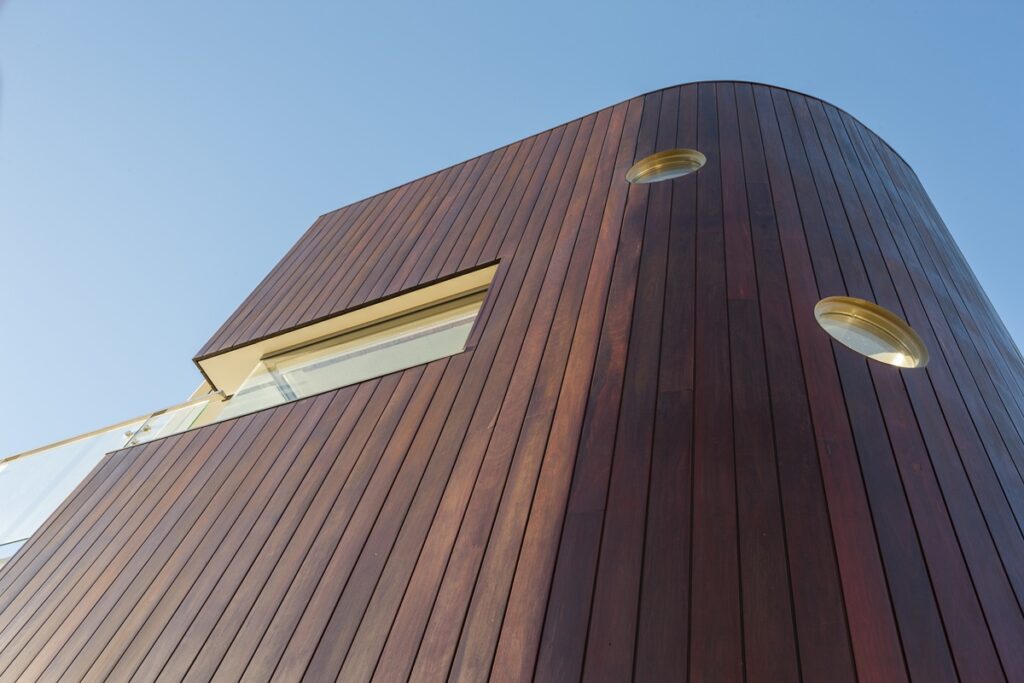
Sustainability meets style
In an era where sustainability is no longer optional, timber stands out as a renewable resource. Unlike concrete or steel, which have hefty carbon footprints, timber absorbs carbon dioxide as it grows. Cladding high rise buildings with timber isn’t just about looking good—it’s about doing good for the planet.
And let’s not forget the aesthetic appeal. Timber brings warmth and texture to a building’s exterior, creating a striking contrast to the cold, impersonal feel of glass and steel. It’s like wrapping a skyscraper in a cosy, natural blanket. For a sleek, modern finish, explore Mortlock Timber’s Satinplank or Proplank.
Fire safety? Yes, really
One of the biggest misconceptions about timber is that it’s a fire hazard. But mass timber is different. Thanks to its dense, layered structure, it chars slowly when exposed to fire, creating a protective barrier that prevents the flames from spreading. This makes it a surprisingly safe option for cladding high rise buildings.
Speed and efficiency
Timber is lightweight compared to traditional building materials, which means faster construction times and lower transportation costs. For architects and builders, this is a game-changer. Cladding high rise buildings with timber isn’t just a design choice—it’s a practical one.
The rules of the game: Regulations for timber-clad high rise buildings in Australia
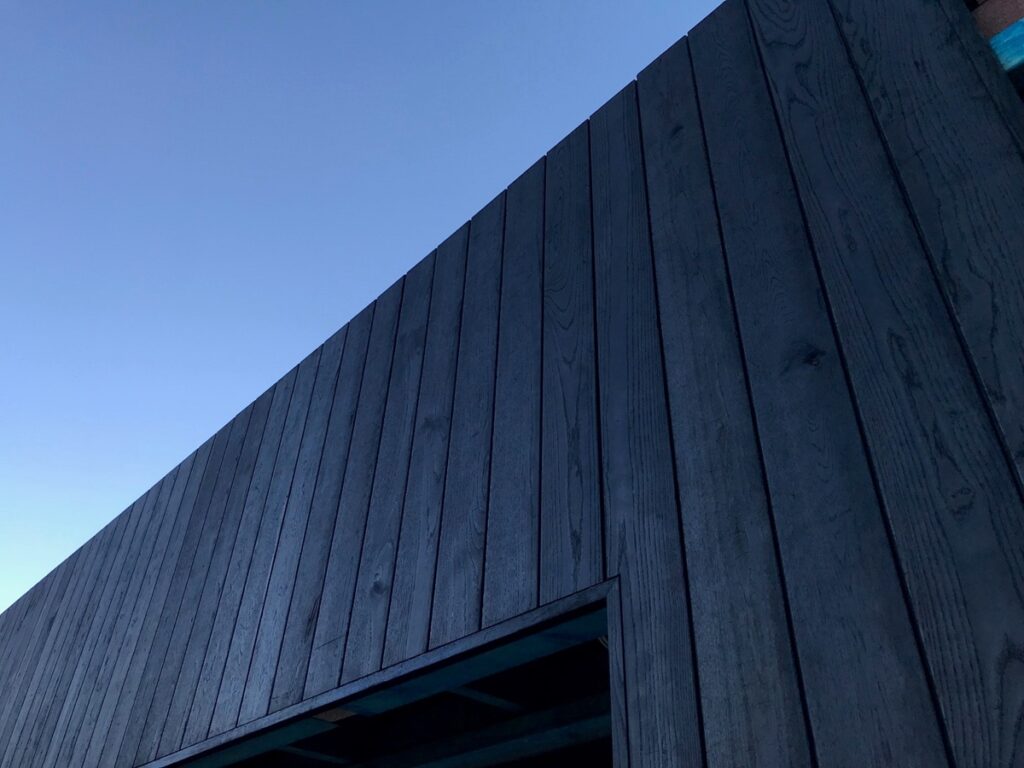
When it comes to cladding high rise buildings with timber, Australia has its own set of rules. The National Construction Code (NCC) governs the use of timber in high-rise buildings, balancing innovation with safety.
How high can you go with timber in Australia?
Currently, the NCC allows timber construction for buildings up to 25 metres in effective height (typically around eight storeys) for certain types of structures, such as offices and apartments. Under specific conditions, such as the use of fire-resistant treatments and advanced engineering, timber can be used in even taller buildings.
Fire safety standards for timber cladding
Fire safety is a top priority in Australia. Mass timber, with its inherent fire-resistant properties, is often treated with additional fire-retardant coatings or intumescent paints to meet NCC standards. These treatments create a protective layer that slows down the spread of flames, ensuring safety without compromising on design.
The role of innovation in pushing boundaries
Australia is no stranger to innovation in construction. Hybrid methods, which combine timber with materials like steel or concrete, are gaining traction. These methods allow for taller, more complex structures while still adhering to safety regulations.
Take the Forté Living building in Melbourne, for instance. As Australia’s first timber high-rise apartment building, it set a precedent for what’s possible with mass timber. Standing at 10 storeys, it showcased how timber could be used safely and effectively in high-rise construction.
What makes mass timber special?
Mass timber isn’t your average wood. It’s engineered for strength, stability, and sustainability. By layering wood products together, manufacturers create panels and beams that rival steel and concrete in performance.
There are several types of mass timber, including:
- Cross-laminated timber (CLT): Think of this as the Swiss Army knife of timber. It’s strong, versatile, and perfect for walls, floors, and roofs.
- Glue-laminated timber (glulam): This is your go-to for beams and columns. It’s like timber’s answer to steel.
- Laminated veneer lumber (LVL): Ideal for long spans and heavy loads, LVL is the heavyweight champion of mass timber.
The role of premium architectural timber suppliers
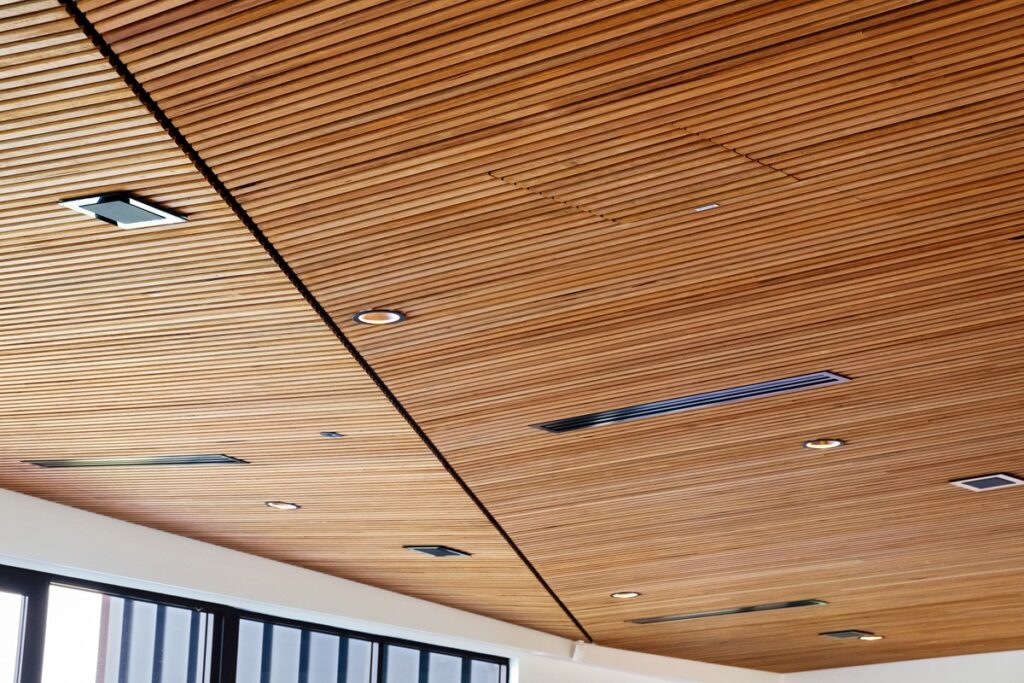
When it comes to cladding high rise buildings with timber, quality is everything. That’s where premium architectural timber suppliers like Mortlock Timber come in. With over 80 years of industry experience, Mortlock Timber is a trusted name in the world of hardwood.
Why choose Mortlock Timber?
- Expertise: With a team of third-generation timber specialists, Mortlock Timber knows wood inside and out.
- Quality: From Satinplank to Proplank, their products are designed to meet the highest standards.
- Sustainability: Mortlock Timber is committed to sourcing timber responsibly, ensuring that every project is as eco-friendly as it is beautiful.
Whether you’re designing a sleek urban high-rise or a cosy residential building, Mortlock Timber has the materials and expertise to bring your vision to life. Explore their range of timber wall solutions, timber ceiling solutions, and timber lining and panelling.
The future of cladding high rise buildings with timber
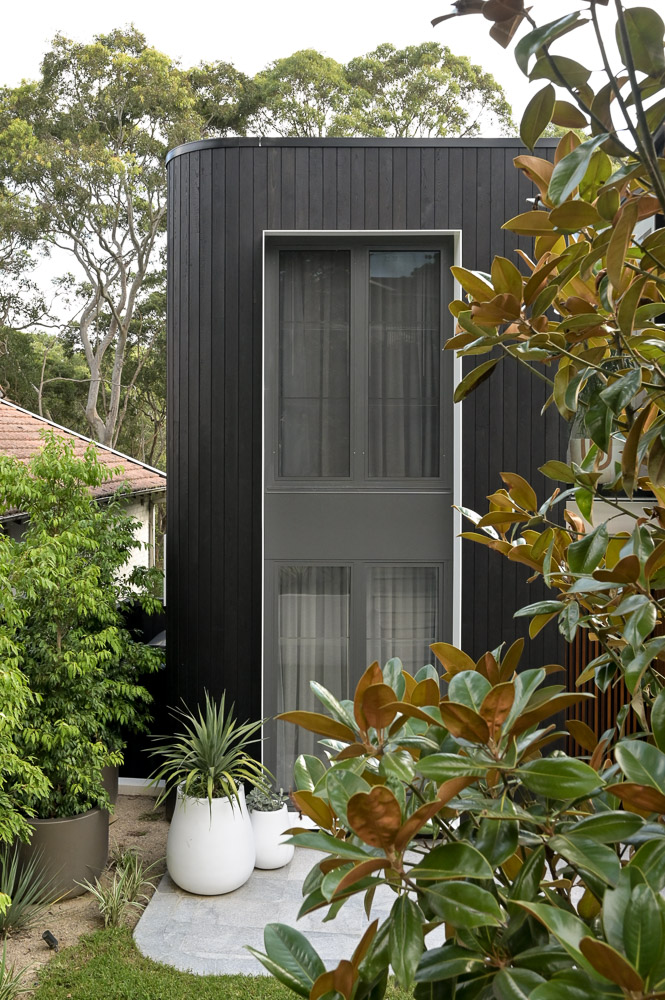
So, what’s next for timber-clad high rise buildings? The possibilities are endless. As technology advances and regulations evolve, we can expect to see even taller, more ambitious projects.
Imagine a city where timber-clad skyscrapers stand shoulder-to-shoulder with traditional buildings, creating a skyline that’s as sustainable as it is stunning. It’s not just a dream—it’s the future of architecture.
Your next timber cladding
Cladding high rise buildings with timber is more than a trend—it’s a movement towards a sustainable future. By choosing timber, we’re reducing our carbon footprint, enhancing fire safety, and creating spaces that inspire. Even if you are unable to use timber externally due to height regulations, you can still incorporate timber within the interior, whether through internal wall solutions, ceiling applications, or panelling, to achieve a timber aesthetic.
With mass timber leading the charge and premium suppliers like Mortlock Timber paving the way, the future of architecture is brighter—and greener—than ever. Ready to explore the possibilities? Contact us today to learn how Mortlock Timber can help you bring your vision to life.
View our pricing and product guide
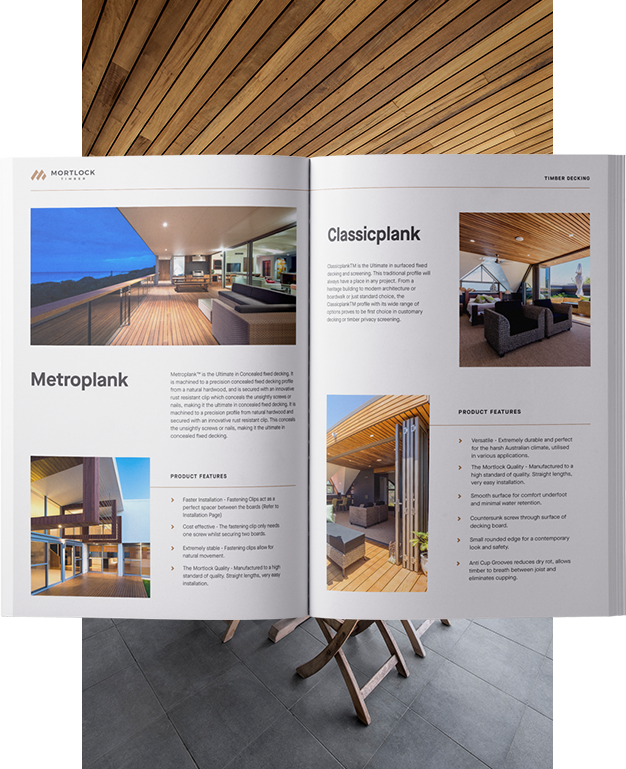
We are committed to bringing you timber products that add value and endure for years to come, even in heavy traffic and harsh weather conditions. We understand the value of efficiency when it comes to installation and keeping hardwood timber costs down. That’s why we’ve spent decades perfecting our designs to make them easier to handle, less wasteful and more efficient to install. This efficiency allows us to offer you premier products that are more cost-effective so that you can experience greater savings on timber wall costs, timber ceiling costs, timber cladding costs and timber decking costs.
Download our Pricing and Product Guide for our complete hardwood timber price list including timber decking prices, timber wall prices, timber ceiling prices and timber cladding prices.
